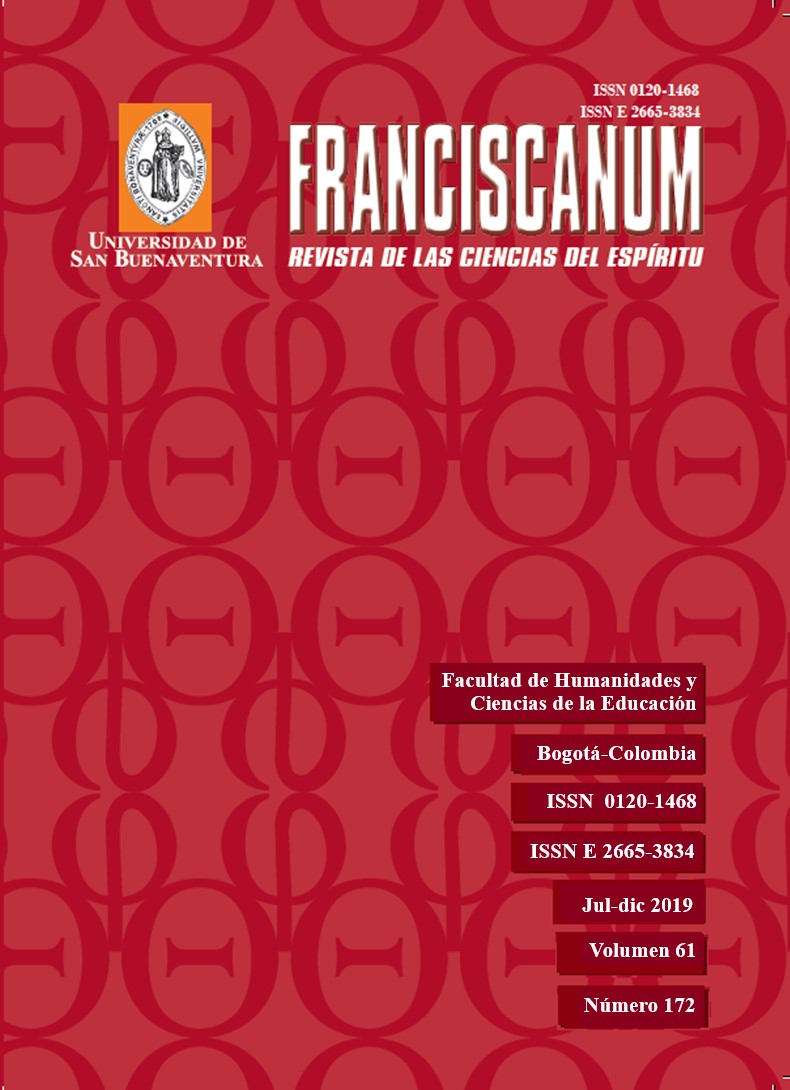This journal provides immediate open access to its content, based on the principle that giving the public free access to research helps a greater global exchange of knowledge.
Therefore, the Creative Commons 4.0 Attribution Attribution - Equal Share (by-sa) License is accepted: The commercial use of the work and the possible derived works is permitted, the distribution of which must be done with a license equal to that regulates the original work.
http://creativecommons.org/licenses/by-sa/4.0/
Along these same lines and in line with the Open Access policy, it is clarified that the authors maintain their rights to articles, without restrictions and, in the same way, they maintain their publication rights, without restrictions. They are only asked to reference the number of the Franciscanum magazine where the article initially appeared.
Abstract
William of Saint-Thierry, a 20th century theologian and mystic, displays man’s nostalgy and desire to know and love God in a language of authentic beauty. This path of ascensional movement –present in all his writings– enables him to develop a sound theology, as man can understand that by loving God, he may enter the same Trinity.
For this reason, for Saint-Thierry abate, nostalgy is a form of love that makes its own path and aspires to arrive at the end of the final day which corresponds to salutare Dei in Comcant. From this movement, the desire does not only confine itself to a psychological phenomenon, but turns into the destiny of fruitio Dei man. Hence, this line of thought must be verified from the author’s theological method, the biblical foundation and richness of spiritual interpretation present in the fabric of this study.



















